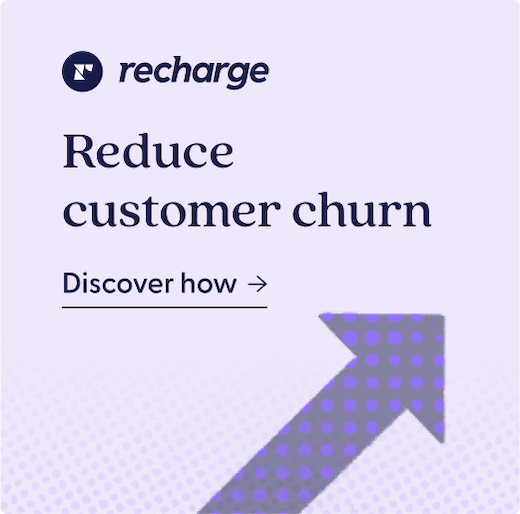Paid membership programs are a powerful way to add value for both your business and customers. In fact, according to a 2020 survey by McKinsey, consumers who pay for loyalty programs are 60% more likely to spend more on the brand after they subscribe to the program. But how, exactly, can you build the best paid loyalty program for your unique business and customer base?
In this post, we’ll explore the benefits of membership programs, the differences between paid and free membership programs, and how to choose the right perks and pricing structure for your program.
Key takeaways
- Paid membership programs are a powerful way to increase customer loyalty and engage your most valuable customers.
- To incentivize customers to take advantage of your program, the benefits you offer them need to outweigh any fees they pay.
- To create the best membership program for your business, focus on the benefits you offer to your members and your pricing model.
What are paid membership or paid loyalty programs?
In paid membership programs—also called paid loyalty programs—brands offer their customers exclusive perks or benefits in exchange for a fee. These membership fees can involve either one-time payments or recurring payments occurring on a set cadence—typically annually or monthly.
The particular benefits of a loyalty program for members vary depending on the brand. The key is that these perks feel valuable to that brand’s unique customer base, and this value exceeds the cost of the membership fee.
Examples of paid program perks for members can include:
- Early or exclusive access to new products or services
- Exclusive access to special content
- Access to in-person or virtual events
- Access to an online community forum
- Special discounts for certain products or services
- Free shipping or discounted shipping
- Charitable donations made in the customer’s name
- Free gifts included in orders
- Rewards points based on the amount the customer spends
Paid vs. free loyalty programs
Unlike fee-based membership programs, free customer loyalty programs do not require an additional fee to participate. However, with this type of rewards program, customers often still have to spend money with the business in order to tap into any unique program benefits.
For example, a makeup store might offer free samples of products after a customer has spent a certain dollar amount. An athletic apparel brand could offer free shipping on any purchase over a particular order minimum, and a coffee shop chain might allow customers to earn points each time they make a purchase, which they can exchange later for a free beverage.
Both paid programs and unpaid programs can motivate customers to spend more with a business and stick around for longer. In this post, we’ll focus specifically on paid programs and how they can benefit your business.
Why should a paid membership program be part of your loyalty strategy?
Paid loyalty programs offer a wealth of immediate and ongoing benefits for not only consumers, but also businesses. Below, we’ll explore the ways in which fee-based loyalty programs can improve your bottom line.
Gain a steady stream of recurring revenue
Even if you don’t offer any of your products or services via subscription, if you charge a fee for your membership program that repeats on a set cadence, you gain a recurring revenue stream. This can allow you to more easily and effectively perform key business functions, such as forecasting and inventory management.
Grow your AOV
Depending on your business goals, you can structure your membership program to encourage customers to spend more with each purchase. For example, by incentivizing customers to hit a $50 order minimum for a free gift with their purchase, you can strategically leverage your membership program to increase your average order value.
Increase customer retention
Customers who engage with and trust in your brand are more likely to stick with you over time, increasing your retention. To maximize this benefit, prioritize these loyal customers, making sure to reassess the ways in which they find value with your brand over time to encourage them to stay engaged with your business.
Attract new customers
When you have a strong base of loyal customers, those individuals can in turn help your customer acquisition. Word-of-mouth recommendations and referrals from your most engaged brand advocates can go a long way in convincing new buyers to try your products.
Access a deeper reserve of customer data
Those who take advantage of your membership program are likely your most engaged and loyal customers. Studying their behavior and soliciting their feedback can be highly informative as you hone your product offerings, even in areas beyond your membership program (e.g. product testing and focus groups).
How to build the best paid membership program for your business
When building a paid membership program, there are two major variables to focus on: your pricing model and your membership benefits. Now, let’s dive deeper into each of these to help you shape the most value-driving program for your business.
Choose your membership pricing model
Beyond deciding whether to launch a paid or free membership program, there are a variety of decisions to make around structuring your membership pricing. For example, will you offer a one-time or recurring fee? Will you give customers the option to choose from multiple membership tiers, each with different pricing and benefits?
To help you make the best choice for your unique customer base, let’s explore some of the most popular types of membership pricing. Regardless of the option you choose, be sure that the benefits you offer outweigh the cost to your customers to ensure the success of the program.
One-time membership fees
A one-time membership fee is also commonly referred to as a lifetime membership, as customers only have to pay it once to continue receiving benefits. This can be an appealing and low-risk option for customers that can allow you to get more members in the door, as they may be more willing to pay if the fee does not repeat. However, with this option, your business doesn’t have the added benefit of a recurring revenue stream, and customers may not be as engaged with your program if there aren’t built-in touchpoints to continue connecting with them over time.
Recurring membership fees
With recurring membership pricing, your customers will be charged on a set, repeating cadence—typically annually or monthly—in exchange for membership benefits. You can also choose to offer multiple cadences for your recurring membership, with a discount on the longer contract to incentivize customers to choose that option and stick with your program for longer.
Grace Everitt, CEO and Creative Director of Tako Agency, recommends that you set the price of your membership at roughly your store’s average order value, and that the more frequently you bill customers, the more robust your program and benefits should be.
Tiered membership pricing
With a tiered pricing program, you may offer several levels to your membership, each with increasing pricing and benefits. For example, you could give customers the option to choose from a basic loyalty program with a minimal fee and core set of benefits and a premium loyalty program with a higher fee and additional perks.
This structure allows you to offer options that suit a wider range of customer budgets, which can be especially effective in challenging economic times. However, be careful not to overwhelm customers with too many choices, which could prevent them from signing up for the program.
Customize your program’s benefits & perks
Your membership benefits are what compel customers to sign up for your program. Therefore, it’s crucial to make sure those benefits are tailored to them and get at the heart of what they value.
Use analytics to uncover overarching trends in customer behavior
Your analytics can be a powerful tool in forming your membership program benefits. Use customer data to directly inform your membership program strategy by uncovering larger trends in their preferences and spending behavior.
You can even segment out your customer base into smaller groups with similar traits to learn which types of customers might be most open to trying your membership program. From there, you can leverage targeted marketing strategies to educate them about the program and encourage them to sign up.
Harness insights from your most loyal existing customers
Analytics alone won’t paint a full picture of your customers’ needs and preferences. To truly understand which benefits matter most to your customers, don’t make assumptions—ask them directly.
You can solicit customer feedback to gauge interest in your program, and use surveys and customer interviews to collect their insights on the benefits that matter most to them. This can directly inform your loyalty strategy and serve as an effective tool not only for launching your program, but also for maintaining it.
Consider value-based benefits
Not all membership benefits have to directly benefit your customers. By aligning your business with the causes your customers care about, you can add deep meaning for them that can be just as powerful in encouraging them to stick with you.
This strategy can be particularly effective when your chosen cause is directly related to your value proposition and the products or services you sell. For example, if your company sells books and your value proposition is centered around making reading more accessible, one benefit of your membership program might be donations toward causes that support literacy.
Increase your customer loyalty with a paid membership program
When built effectively, the benefits of membership programs for your business go beyond implementing a recurring revenue stream or increasing your average order value. The best membership programs create deeper value for your customers, reinforce your value proposition, and increase loyalty in your brand.



